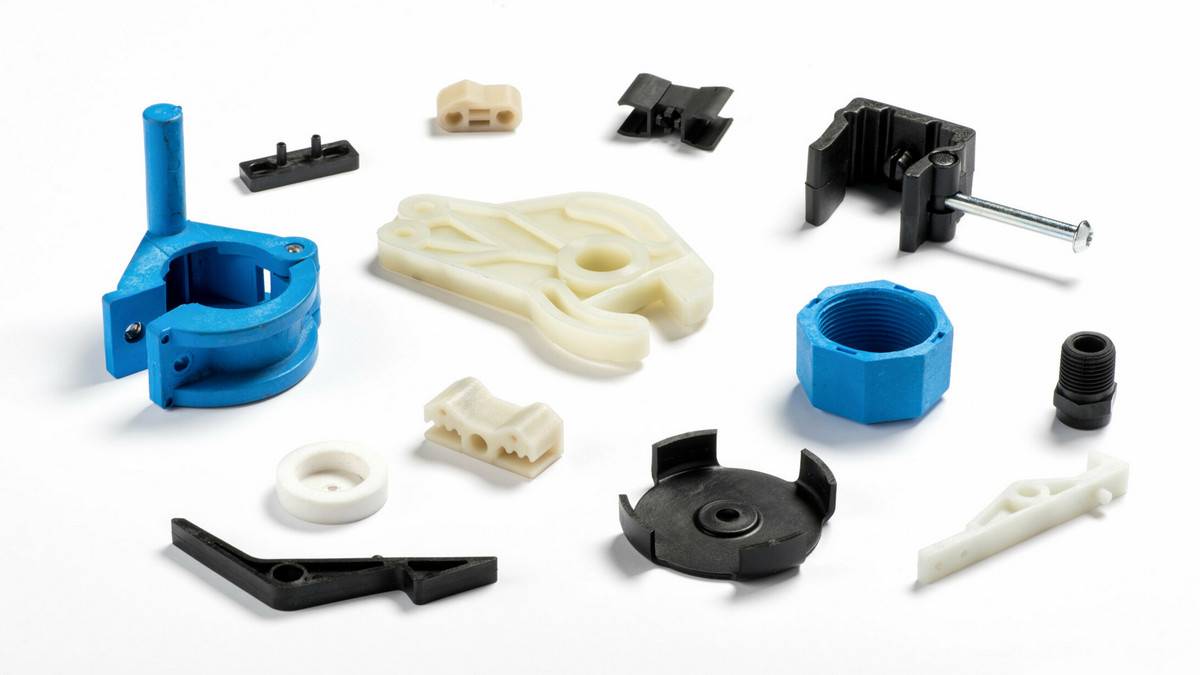Powder injection molding (PIM), including metal injection molding (MIM) and ceramic injection molding (CIM), is a one-shot molding technology that combines high throughput and high precision. This technology has been widely used in many industries to produce various precision parts.
What is Ceramic Injection Molding Technology (CIM)?
Ceramic Injection Molding (CIM) is a new process for preparing ceramic parts developed by combining the polymer injection molding method with the ceramic preparation process. CIM technology is similar to metal injection molding (MIM) technology. They are the main branches of powder injection molding (PIM) technology and are developed based on relatively mature polymer injection molding technology. For mass production of ceramic products with high dimensional accuracy and complex shapes, the use of ceramic powder molding is the most advantageous.
The ceramic injection molding technology is to add thermoplastic resin, thermosetting resin, plasticizer, and anti-friction agent to the ceramic powder to make the ceramic powder into a viscous elastomer, and then inject the heated and mixed chain slurry into the metal mold from the nozzle. Commonly used thermoplastic resins are polyethylene, polystyrene, and polypropylene, and the additional amount is 10%~30%. CIM technology can achieve the appearance that the traditional dry pressing process cannot achieve, and the product can almost not be restricted by appearance.
Features of Ceramic Injection Molding Technology (CIM):
Advantage:
- The molding process has the characteristics of a high degree of mechanization and automation, high production efficiency, short molding cycle, and high blank strength, and its process can be precisely controlled by the program, which is easy to achieve large-scale and large-scale production.
- It can nearly net shape various small ceramic parts with complex geometric shapes and special requirements, so that the sintered ceramic products do not need to be machined or less processed, thereby reducing the expensive ceramic processing cost.
- The formed ceramic products have extremely high dimensional accuracy and surface finish.
Disadvantages:
- One-time equipment investment and processing costs are high, and it is only suitable for mass production.
The Process Flow and Process of Ceramic Injection Molding (CIM):
- Feeding preparation:
The feed is a mixture of powder and binder. The injection process requires the injection feed to have good fluidity, which requires the selection of powders that meet the requirements and an appropriate binder system, and a certain loading ratio at a certain temperature. Injection molding feeds, to ensure the smooth progress of the subsequent process, and its products may go from the laboratory to the high-tech market. So, feed preparation is critical in the whole process.
- Injection molding and mold design:
Improper control of the injection molding process can lead to the formation of many defects in the product, such as cracks, pores, welds, delamination, powder, and binder separation, etc., which cannot be detected until debinding and sintering. CIM often uses multi-cavity molds. The dimensions of each cavity are different, and the wear of the cavity in use will lead to different sizes of parts. In addition, the use of injection return material can affect viscosity and rheology. Therefore, controlling and optimizing molding parameters such as injection temperature, mold temperature, injection pressure, and pressure holding time is crucial to reducing the fluctuation of green body weight, preventing the separation and segregation of components in the injection material, and improving product yield and material utilization. The mold design of CIM technology mainly considers the flow control of the feed material in the mold cavity during injection molding. Because most CIM products are small-sized parts with complex shapes and high precision requirements, it is necessary to carefully design and arranges the position of the feed port, the length of the runner, and the position of the exhaust hole. Of course, mold design requires a clear understanding of feed rheological properties, cavity temperature, and residual stress distribution. In addition, computer simulation technology will play an important role in powder injection molding mold design.
- Degreasing process:
Degreasing is the process of removing organic matter from the molding body and producing a small amount of sintering by heating and other physical methods. Compared to batching, molding, sintering, and post-processing of ceramic parts, debinding is the most difficult and important factor in injection molding. Incorrect process methods and parameters of the debinding process cause inconsistent product shrinkage, resulting in deformation, cracking, stress, and inclusions. Debinding is important for subsequent sintering, and cracks and deformations that occur during debinding cannot be compensated for by sintering. Binder and degreasing are linked together to determine the way of degreasing. In addition to traditional thermal degreasing and solvent degreasing, the current degreasing process also includes catalytic degreasing and water-based extraction degreasing developed in recent years.
- Sintering:
The degreasing ceramic green body is densified and sintered at high temperature to obtain dense ceramic parts with desired appearance, shape, dimensional accuracy, and microstructure. Since the ceramic injection molding blank contains pores left by degreasing, the product shrinkage rate is relatively large during sintering, usually reaching 13%-15%. The research focus of CIM technology is the precision control of sintered dimensions. In addition, sintering equipment is also the key to sintering technology.
Several Elements of the Ceramic Powder Injection Molding Process:
Application of CIM Ceramic Injection Molding:
Injection molding technology has been applied to the preparation of various high-performance ceramic products. Such as ceramic medical devices in the biomedical field, ceramic brackets, and ceramic dental posts for dental orthodontics and restoration. Zirconia ceramic ferrules and ceramic sleeves for optical communications. Alumina insulating ceramic components are used in the semiconductor and electronics industries, such as integrated circuit high-encapsulation tubes, small vacuum switch ceramic tubes, and small ceramic sliding shafts. Ceramic knives, ceramic bracelets, and ceramic cases are used in modern life and watchmaking. Turbine rotors, blades, aircraft, spacecraft bearings, rocket nose cones, etc. in the aerospace industry. Automotive engines, valves, pistons, turbocharger rotors, nozzles, etc. in the automotive industry.







.png)






